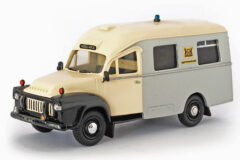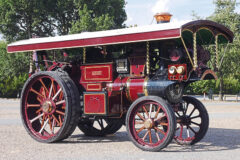The amazing machines at the HCEA’s 36th Annual International Convention!
Posted by Chris Graham on 14th April 2023
Keith Haddock reports on the amazing variety of vehicles in action at the HCEA’s 36th Annual International Convention in Ohio, USA.
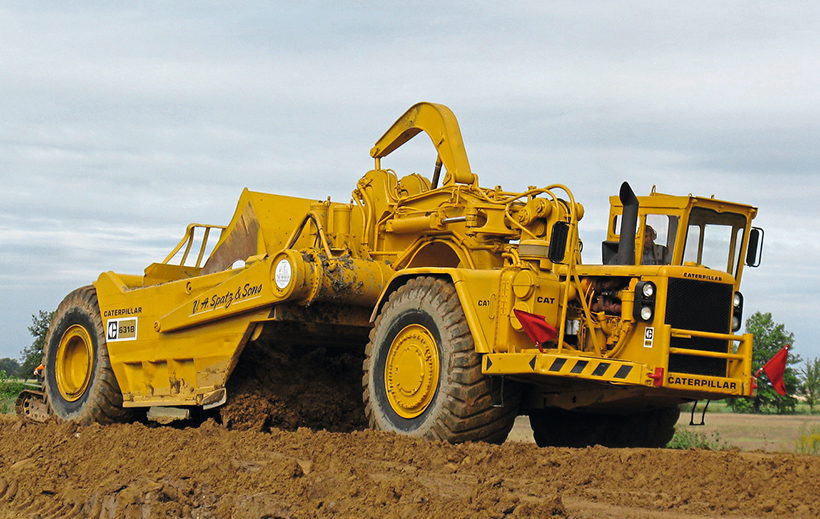
HCEA’s 36th Annual International Convention: Powering away in the demonstration area is the Caterpillar 631B scraper showing what it can do. (Pic: Keith Haddock)
The Historical Construction Equipment Association’s 36th Annual International Convention & Old Equipment Exposition was held last year at Bowling Green, in Ohio, over September 23rd-25th, and there was a mouth-watering selection of machinery to be seen at work.

Going back to a different era is the Allis-Chalmers TS-260 with GM two-stroke diesel power being pushed by a Caterpillar D7. (Pic: Keith Haddock)
Perfect blue sky and sunshine brought near-record attendance for the first two days, and although some rain fell on the final day, the show was deemed a great success. With over 180 antique historical construction machines on permanent display at this location (also known as the National Construction Equipment Museum), and some 140 additional machines brought to the show by their owners, the HCEA event offered an incredible experience for everyone interested in old machinery.

Rare to see, the International 2T-75 Clark elevated grader. (Pic: Keith Haddock)
Some major donations of equipment were recently added to the permanent roster including four Caterpillar machines from quarry owner Gary Mahan of New Jersey. These are two 631B motor scrapers, a 631B 10,000-gallon water bowser and a D9G crawler tractor.
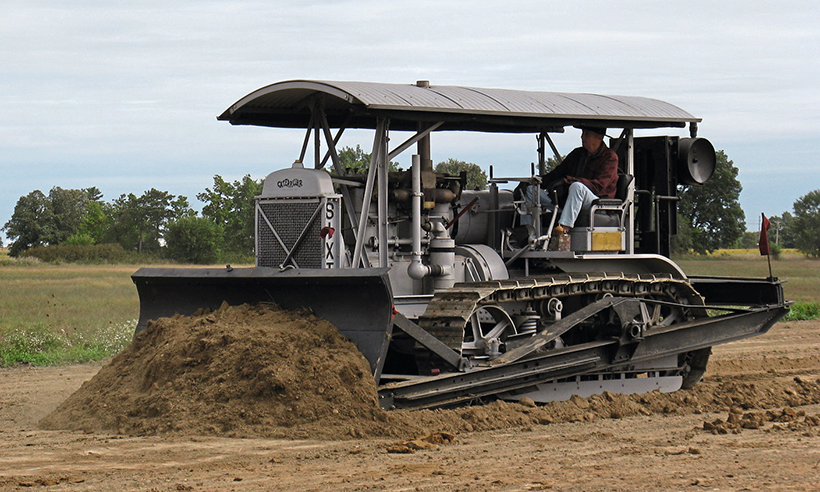
Introduced in 1919, the Best SIXTY was ahead of all its rivals and was the tracklayer that broke Holt’s back, so to speak, bringing the two crawler giants together to form Caterpillar in 1925. (Pic: Keith Haddock)
These machines were overhauled and painted before being donated, so they arrived at the HCEA ready for work! And work they did – joined by a fleet of other scrapers, large and small, to move topsoil and excavate for a drainage pond. An excellent demonstration of scraper operation was performed for the audience who may not all have been familiar with these types of earthmovers.
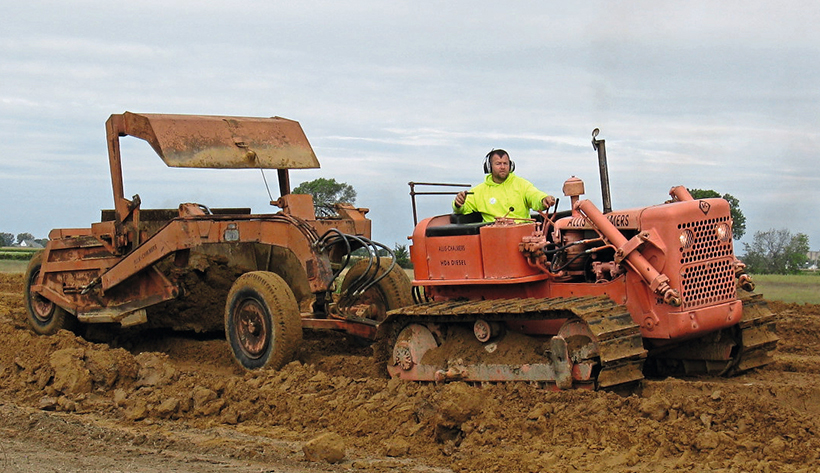
This Allis Chalmers HD-6, with an Allis scraper box behind, makes a great combination. (Pic: Keith Haddock)
Other motor scrapers joining the action included Allis-Chalmers TS-260, Euclid TS-14, Caterpillar 613 elevating scraper, and International 2T-75. This excellent representation covered the ‘big four’ American scraper manufacturers of the 1950s to the 1980s. In addition, crawler tractors and dozers in action included a 1920s Caterpillar SIXTY with hydraulic dozer, Allis-Chalmers HD-6 with matching Allis-Chalmers scraper, a Caterpillar D4 with No.40 scraper and a pair of John Deere dozer models 40C and 430.
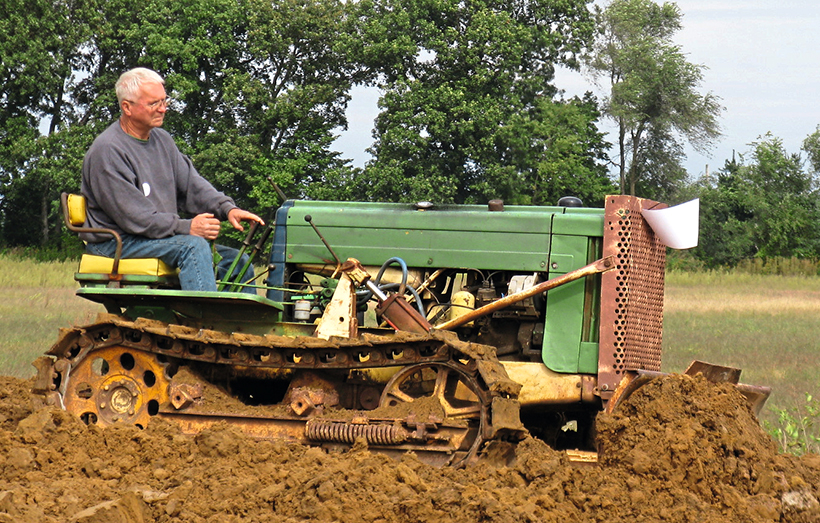
A popular, small crawler in the USA was the 1958 John Deere 430; a type that came to the UK in preservation times. (Pic: Keith Haddock)
More equipment in action
Among the many activities taking place was a rock crushing operation consisting of a team of five machines working together. First seen in 2019, the last time the show was held at HCEA headquarters, a vintage Allis-Chalmers 10-inch ‘Superior McCully Crusher’ was driven by a long belt coupled to a Russell 30-90 steam traction engine. The crusher was loaded with large rocks delicately placed by the clamshell (grab) bucket of HCEA’s own 1926 Link-Belt K2 crawler crane. The crushed rock was fed into a Barber-Greene 543 elevator loader which lifted it high into the body of a 1959 Euclid R-18 rear dump truck. Loads of crushed stone were hauled to various areas where they were needed for projects on the property.
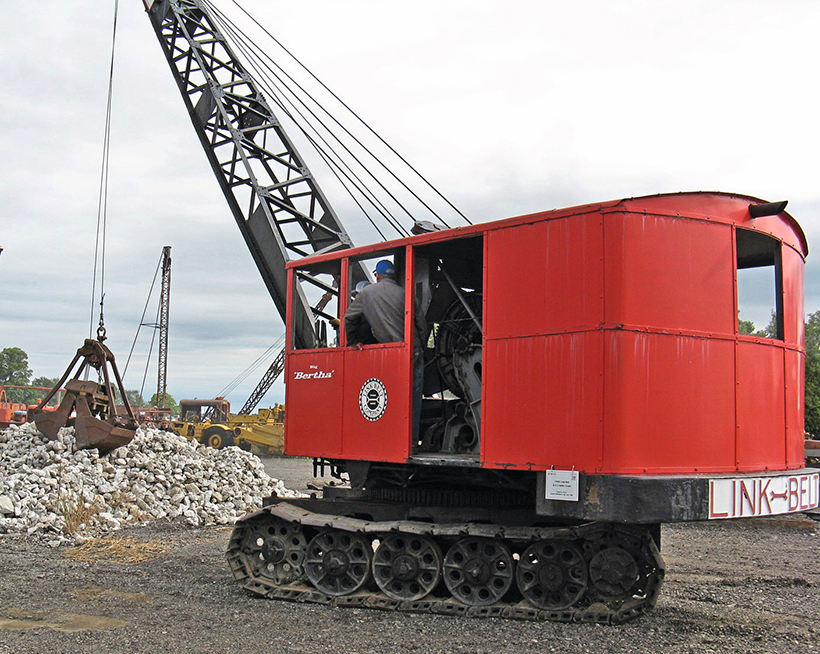
Bertha the Link-Belt K2 dates from 1926 and works a treat. (Pic: Keith Haddock)
Another popular centre of attraction was the usual long bank of earth where many different excavators dug in to impress the crowd. Formed in the early days of the HCEA to provide a good working face for excavators, the bank supports backhoes and draglines on top while shovels dig below. Moving the earth several times over, the several different makes of excavators, mostly owned by the HCEA, included a ¾-yard Koehring 304 dragline, ½-yard Bucyrus-Erie 15-B backhoe, ¾-yard Bucyrus-Erie 22-B, 2½-yard Manitowoc 3500 dragline, ¾-yard Lima 34 shovel, a rare ½-yard Northwest Model 2 shovel, 3/8-yard Schield Bantam C350 backhoe, Link-Belt HC2000 Rotascope, and the ¾-yard Marion 21 electric-powered shovel with its attendant Caterpillar D13000 diesel generator set, claimed to be the world’s smallest preserved fully-electric excavator.
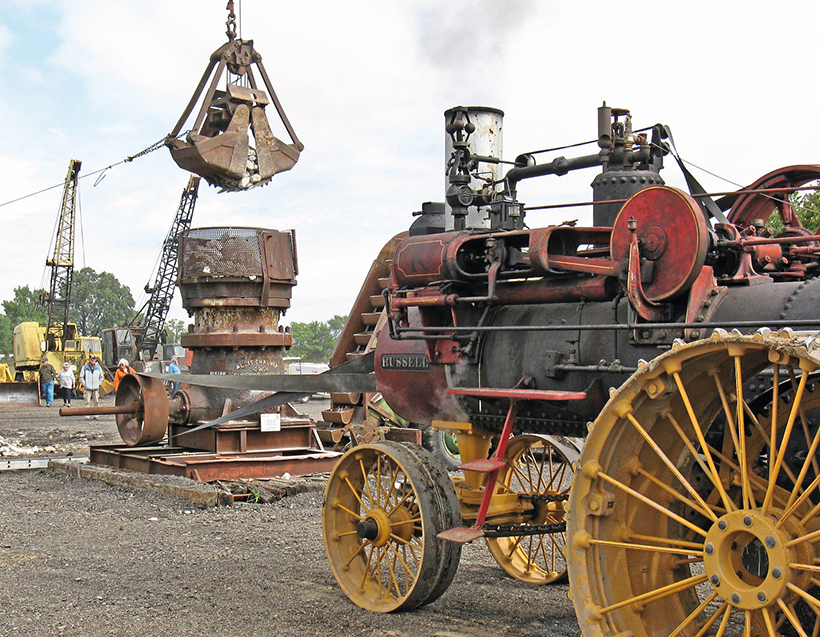
The big Russell 30-90 traction engine driving the Allis-Chalmers stone crusher; a popular item of industrial equipment from Allis-Chalmers. (Pic: Keith Haddock)
Of all the many types and sizes of excavators seen at the show, there was one that attracted the attention of the most ardent excavator enthusiast. Making a surprise appearance was a 1954 Lorain TL-25 scoop shovel, recently acquired by George Marsh. No-one expected to ever see one of these rare beasts in operation, but there it was, fully-restored with new hydraulic hoses (costing $1,200 according to George) and digging well. Available as an option on the Lorain TL-25 cable excavator, the crowding action is entirely worked by cables with rack-and-pinion thrust – only the bucket tilt is hydraulic.
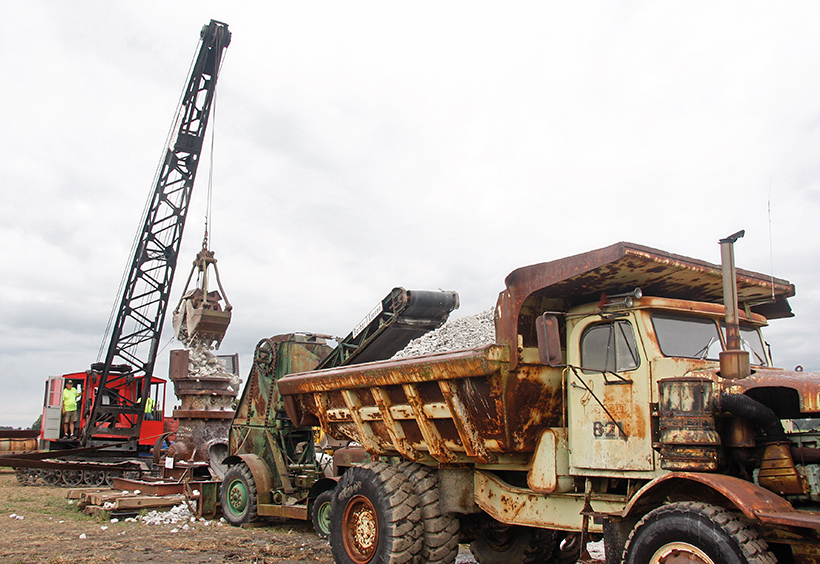
The Barber Green 543 loads the 1959 Euclid R-18 dump truck (as in the Dinky toy) with the Link Belt and Allis crusher working well. (Pic: Keith Haddock)
Several truck-mounted cranes and excavators were on show, mostly owned by the HCEA. A rare truck-mounted rig was a 1954 Schield Bantam T-35 cable shovel mounted on a rebuilt 1940 White M2 military halftrack. Others included a 10-ton Bay City 150T-40, 20-ton Gar Wood M20A, and 30-ton Lorain MC414.
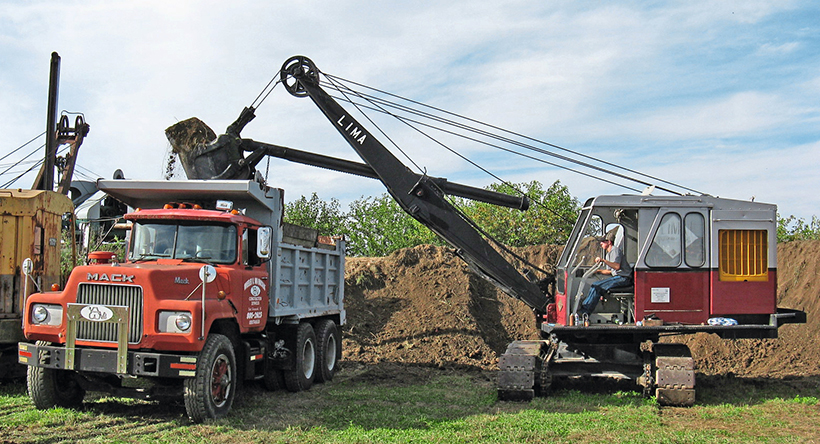
The Pennsylvanian Allentown-made Mack with the 1956 Lima 34 looking a treat. (Pic: Keith Haddock)
Hydraulic truck-mounted excavators were represented by a 1951 Bucyrus-Erie H-3, one of the first hydraulic excavators made by the company, and two different vintage Link-Belt Rotascopes: the HC2000 mentioned above and a 101-HT, representing Link-Belt’s entry into the hydraulic excavator market in 1963. Its patented Rotascope features a telescoping boom that also rotates longitudinally, employing an unusual pulley and cable system. A hydraulic cylinder mounted on the boom is connected to moveable pulleys and cables that wrap around the boom to provide limited rotation.

A rare machine to see is the Link-Belt HC2000 grab. (Pic: Keith Haddock)
There were several motor graders at work including an Allis-Chalmers model D (50hp, weight 9,350 pounds), Galion 503 (55hp, weight 9,000 pounds), and Caterpillar 12E (115hp, weight 24,000 pounds). Other machines of particular interest were a Seaman combined rubber and steel wheeled compactor with International Harvester prime mover built by the Seaman-Gunnison Corporation of Wisconsin, and a rare 1932 Huber 40-62 wheeled tractor. This was claimed by its owner as the largest tractor built by the Huber company.
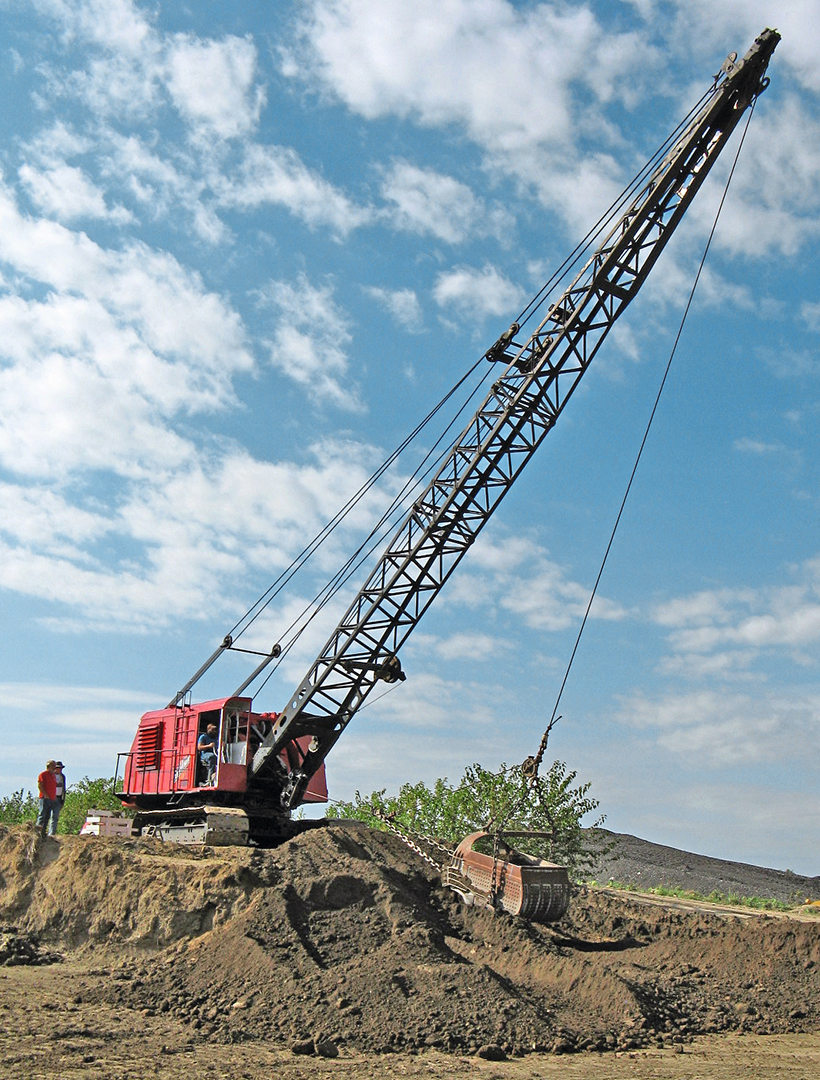
Looking good, the Manitowoc 3500 dragline worked a treat and they were very good machines for their time. (Pic: Keith Haddock)
Recent HCEA donations received
There’s always something new to see at the HCEA’s National construction Equipment Museum. Additions donated and received during the past year include a 1953 ¾-yard Bucyrus-Erie 22-B shovel, an early Buckeye wheel trencher (No.1 Contractor’s Drainage Machine), a 1964 Ingersoll-Rand CM2 crawler drill, a 1956 Jaeger 6SW concrete mixer, and 1970 Koehring 505 backhoe. In addition, workshop tools and supplies continue to be generously donated.

A Lorain TL-25 scoop shovel all in original clothes. (Pic: Keith Haddock)
When introduced in 1963, the Koehring 505 was billed as the world’s largest hydraulic hoe with its weight of 50 tons, horizontal reach of 40 feet and standard bucket of two cubic yards. Another interesting addition was a 1920s Wilford shovel. The half-swing shovel was designed and built by William Ford, brother of famed Henry Ford. In 1928, Ford’s company was purchased by the Unit Corporation. It then passed into new ownership which eventually became Unit Crane & Shovel Corporation in 1945.
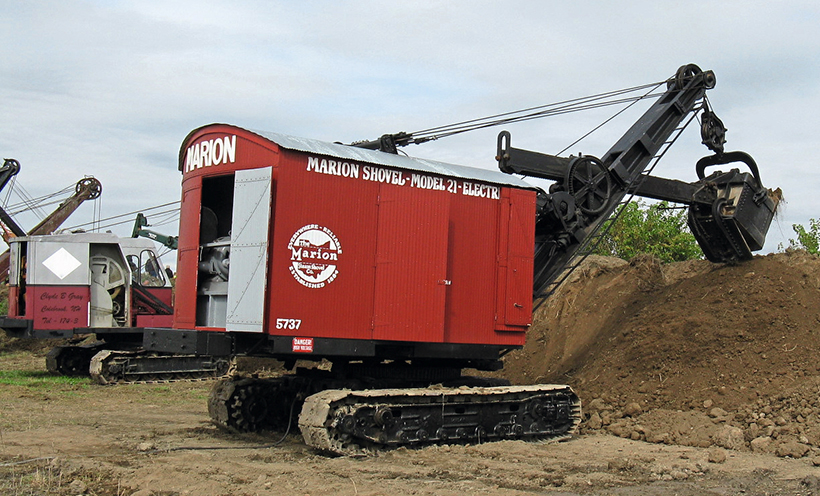
The Marion 21 electric was also made in steam format and looks a treat all restored. (Pic: Keith Haddock)
The HCEA has maintained itself very well during the Covid pandemic. The site just outside Bowling Green, Ohio, now comprises 80 acres including four main buildings. A good portion of this land is rented to local farmers when not needed during show events. The four buildings are: i) Main office building including, climate-controlled archive, library and store rooms, ii) Museum building including repair shops and lunch room, iii) Secondary storage building, and iv) Power of Yesteryear building (POY). Although owned by the HCEA, this building was partly financed by the local non-profit organisation for individuals interested in all aspects of antique power, mostly related to agriculture. It provides POY members with a permanent indoor location to store their equipment.
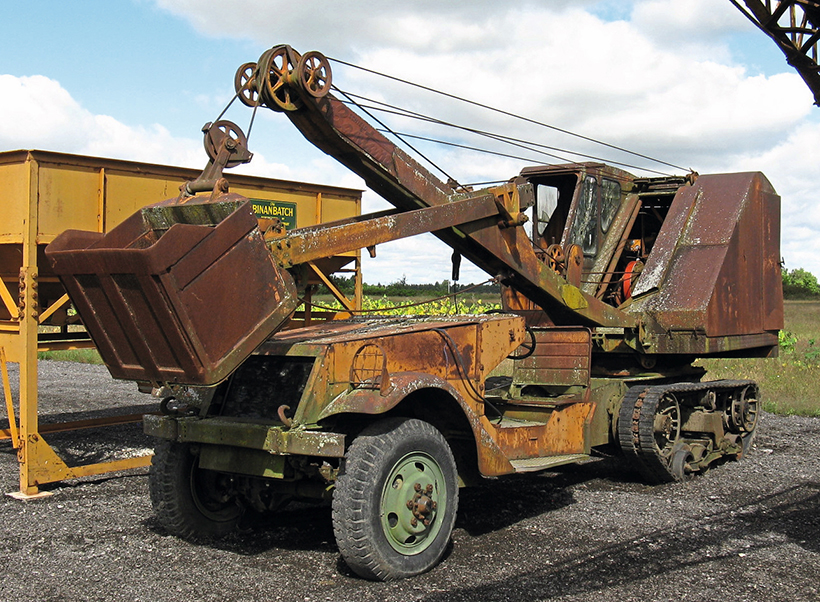
A 1954 Bantam T35 mounted on an ex-military White M2 half-track. (Pic: Keith Haddock)
Plans for a new, much larger HCEA museum building are now well advanced with foundations expected to start this year. The original farmhouse on the property will soon be demolished. For many years only used for storage, it is no longer weather-proof, and stored archives have thus been transferred to temporary storage containers. This material, together with frequent additional donations received, will eventually be stored in new climate-controlled accessible archives in the new building.
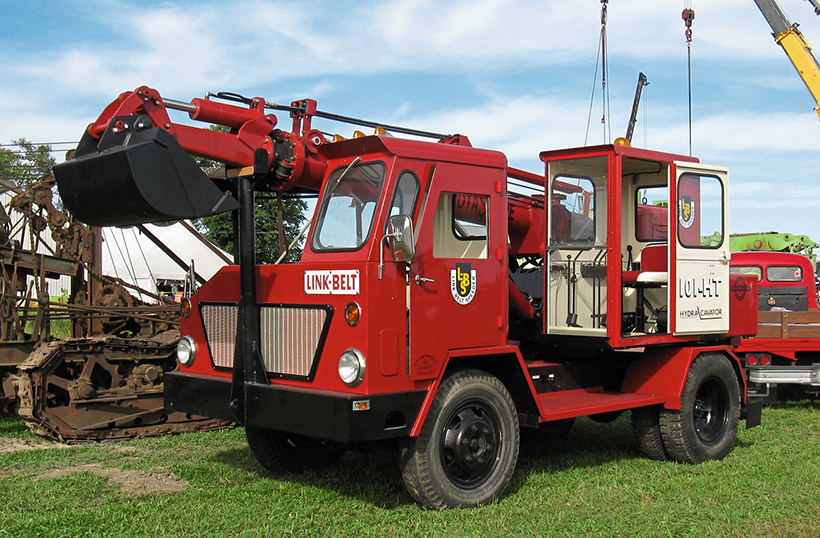
Another great machine is the Link-Belt 101 HT grab. (Pic: Keith Haddock)
The HCEA is entirely funded by private donations, membership subscriptions and memorabilia sales. HCEA management, including this writer, would like to see more memberships in the United Kingdom. With the demise of Classic Plant & Machinery magazine, the quarterly HCEA publication Equipment Echoes is the ideal replacement. Focusing on antique construction and earthmoving equipment, the magazine covers restoration projects and many accurate company histories. The $55 US dollar subscription translates as a similar amount for the former Classic Plant subscription. For more information, check www.hcea.net.
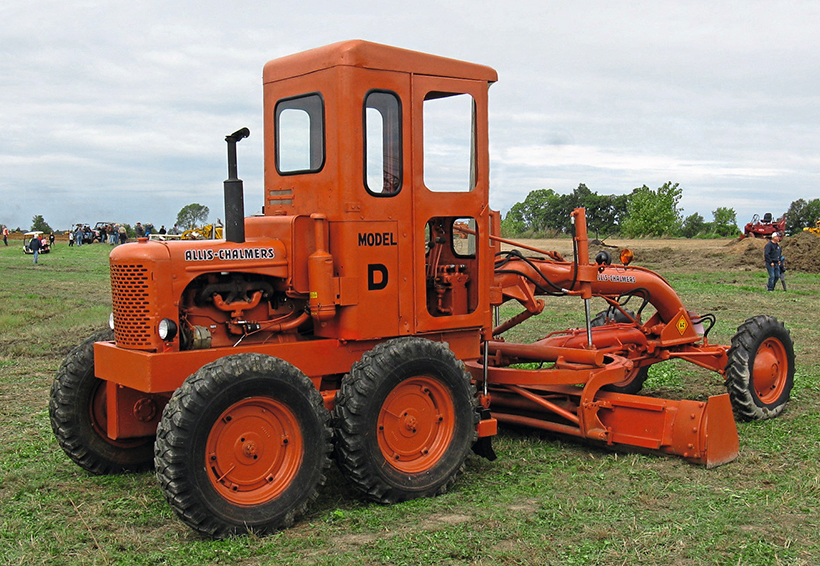
Wow! The Allis-Chalmers D grader, fitted with an alternator in later life. (Pic: Keith Haddock)
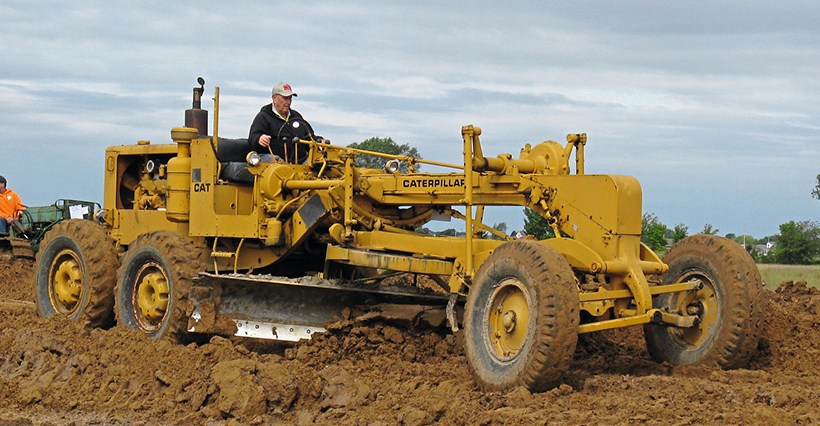
The Caterpillar 12E grader was a popular piece of kit at the show. (Pic: Keith Haddock)

The local company, Galion, made this 503 model in 1954. (Pic: Keith Haddock)
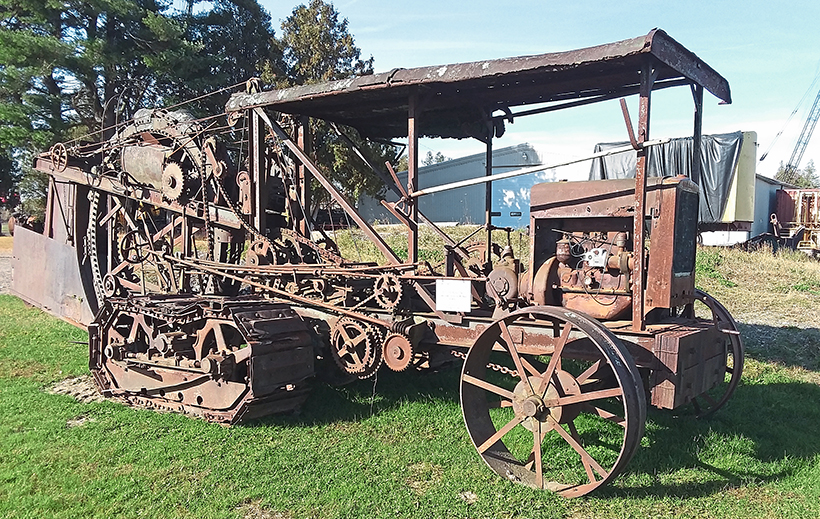
Buckeye wheel trenchers were steam-powered originally but were hugely successful. (Pic: Tom Berry)
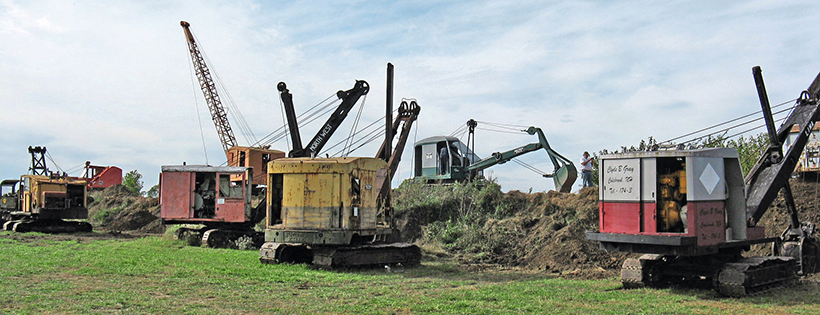
Wow! By far the best place to see classic plant working in 2022 was at Bowling Green. (Pic: Keith Haddock)
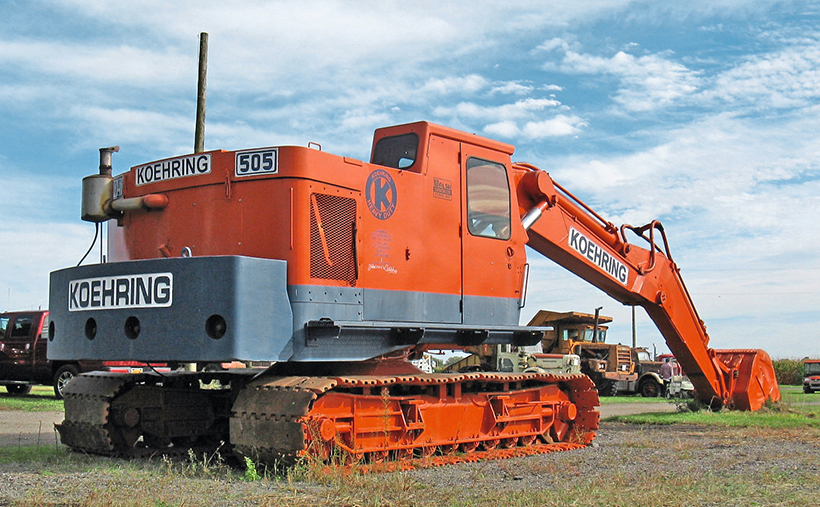
The 1970 Koehring 505 has been impressively restored – no mean feat! (Pic: Keith Haddock)

Heading for new pastures goes the Ohio-made Russell 30-90 showing the maker’s insignia on the tender – ‘The Boss’ Russell engines are well-built and have Scottish connections, of course. (Pic: Keith Haddock)
This feature comes from the latest issue of Old Glory, and you can get a money-saving subscription to this magazine simply by clicking HERE



